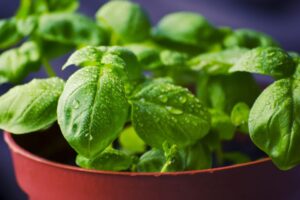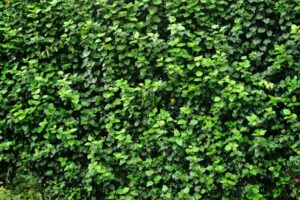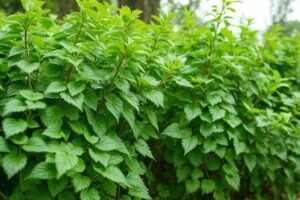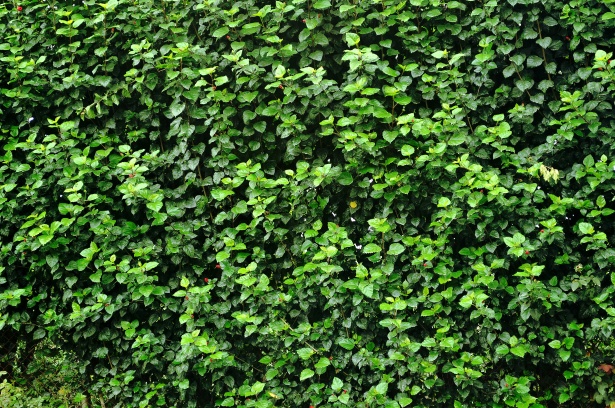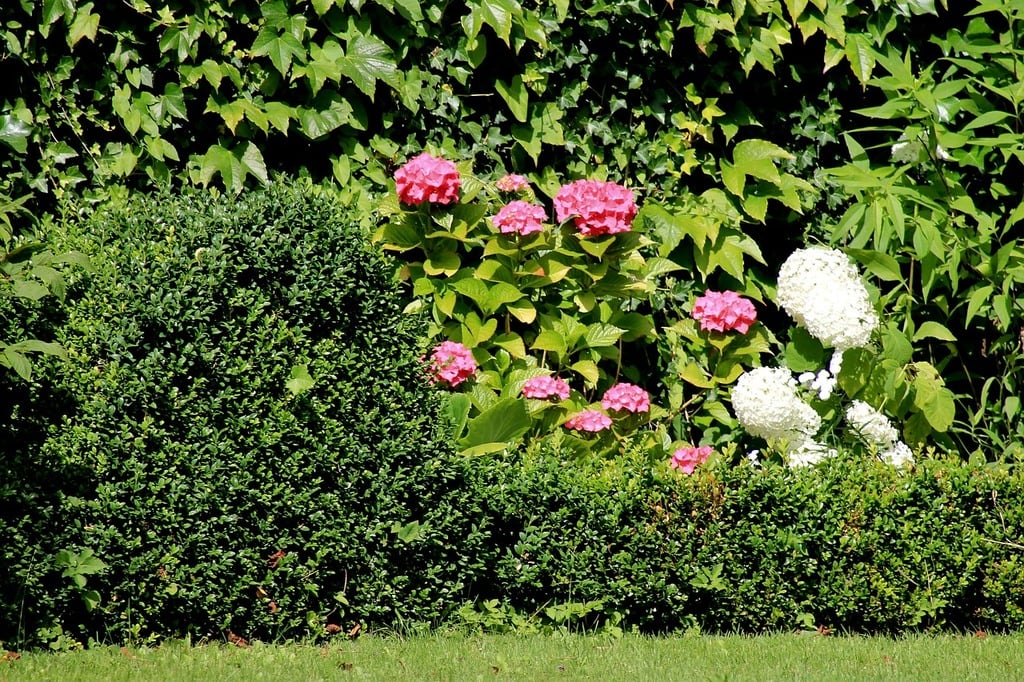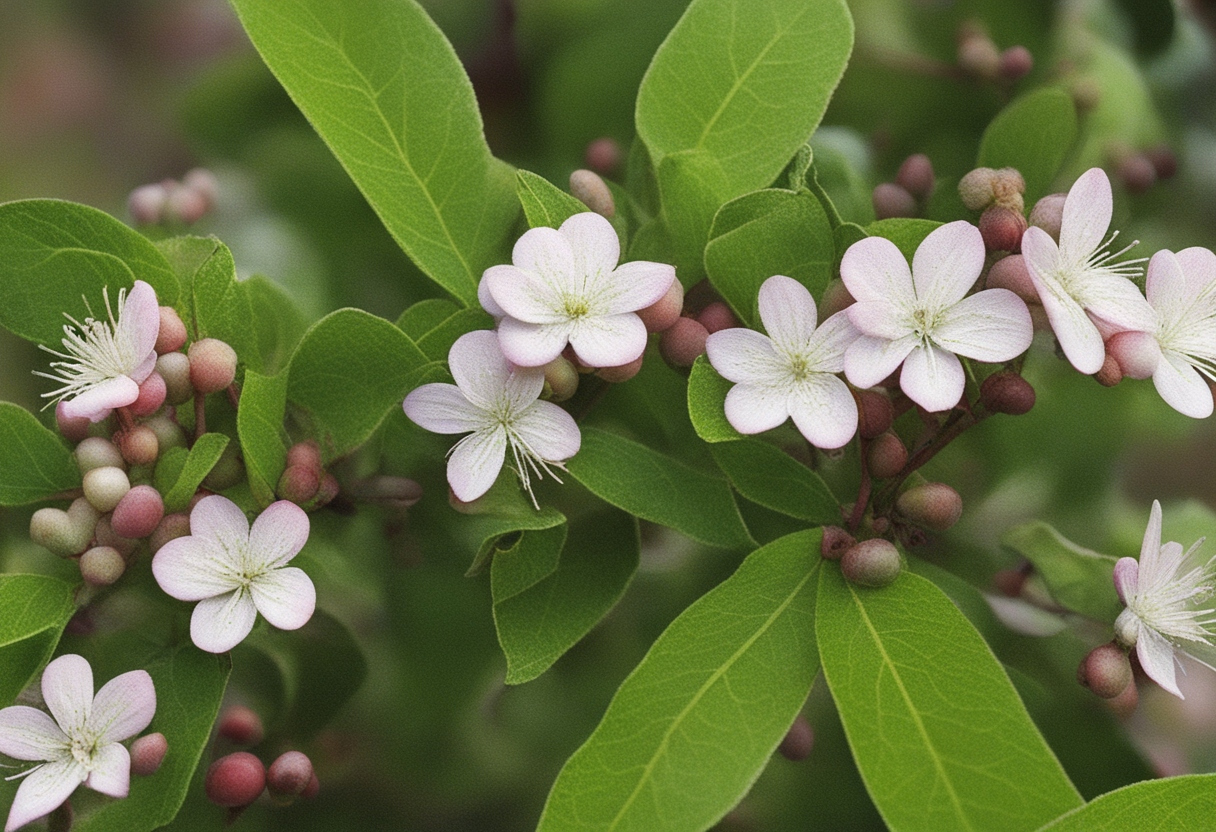Understanding the Importance of Erosion Control and Soil Stabilization
Erosion control and soil stabilization are crucial aspects of land management that often go unnoticed. Without proper measures in place, erosion can ravage landscapes, leaving behind barren soils, damaged ecosystems, and increased risks of flooding and landslides. Therefore, understanding the importance of erosion control and soil stabilization is essential for ensuring the long-term health and sustainability of our land.
One of the key reasons why erosion control and soil stabilization are so important is their role in preserving soil fertility. As erosion occurs, valuable topsoil is washed away, carrying with it essential nutrients that support plant growth. This loss of fertile soil can have severe consequences, leading to reduced agricultural productivity and degraded natural environments. By implementing effective erosion control measures, such as using shrubs to anchor the soil, we can prevent this loss of topsoil and ensure the continued fertility of our land.
Additionally, erosion control and soil stabilization play a crucial role in managing water resources effectively. When erosion takes place, large amounts of sediment are often deposited in rivers, lakes, and streams. This sedimentation not only impacts the quality of the water but also disrupts the flow patterns, increasing the risk of flooding and compromising water availability for downstream communities. By implementing strategies like planting shrubs to retain soil on slopes, we can significantly reduce erosion and maintain healthy water systems for both human and natural habitats.
• Erosion control and soil stabilization are essential for preserving soil fertility.
• Loss of fertile topsoil can lead to reduced agricultural productivity and degraded natural environments.
• Effective erosion control measures, such as using shrubs to anchor the soil, can prevent loss of topsoil and ensure continued land fertility.
• Erosion control and soil stabilization also play a crucial role in managing water resources effectively.
• Sedimentation from erosion can impact water quality and disrupt flow patterns, increasing the risk of flooding.
• Implementing strategies like planting shrubs to retain soil on slopes can reduce erosion and maintain healthy water systems.
The Impact of Erosion on the Environment and Landscapes
Erosion, although a natural process, can have a detrimental impact on the environment and landscapes. One of the most evident consequences of erosion is the loss of fertile topsoil. As the soil is washed away, it takes with it essential nutrients and organic matter that are crucial for plant growth. This depletion of nutrients ultimately leads to reduced agricultural productivity and can significantly impact food production. Additionally, the eroded soil can also find its way into water bodies, causing sedimentation and impairing water quality. This, in turn, affects aquatic ecosystems and the organisms that rely on them for survival.
Furthermore, erosion can also result in the alteration of landscapes. Slopes that were once stable become vulnerable to landslides and slope failures due to the weakening of the soil structure. This can not only cause damage to infrastructure such as buildings and roads but also pose a threat to human lives. In addition to these immediate physical impacts, erosion can also lead to the displacement of flora and fauna. The loss of vegetation, which acts as a buffer against erosion, can disrupt ecosystems and reduce biodiversity. Overall, the impact of erosion on the environment and landscapes underscores the urgent need for effective erosion control and soil stabilization measures.
• Loss of fertile topsoil leads to reduced agricultural productivity and impacts food production
• Eroded soil can cause sedimentation and impair water quality in water bodies
• Impaired water quality affects aquatic ecosystems and organisms reliant on them for survival
• Slopes become vulnerable to landslides and slope failures, damaging infrastructure and threatening human lives
• Displacement of flora and fauna due to erosion disrupts ecosystems and reduces biodiversity
• Urgent need for effective erosion control measures to protect the environment
Exploring the Benefits of Shrubs in Erosion Control and Soil Stabilization
Shrubs play a vital role in erosion control and soil stabilization. These humble plants offer several key benefits that contribute to the overall health and stability of the land. One of the primary advantages of using shrubs for erosion control is their ability to create a natural barrier against the forces of wind and water. Their dense root systems act as anchors, holding the soil in place and preventing erosion caused by runoff and the movement of loose sediment. Additionally, shrubs help to reduce the impact of heavy rainfall by slowing down the flow of water, allowing it to infiltrate the soil gradually rather than causing rapid runoff. This process helps to prevent soil erosion and retain water, promoting healthy plant growth and maintaining the overall stability of the landscape.
In addition to their role in erosion control, shrubs also contribute to soil stabilization. As these plants grow and develop their root systems, they create vast networks of roots that bind the soil particles together, preventing them from being washed away or blown off by wind. This anchoring effect is particularly beneficial on sloping terrain, where the risk of erosion is higher. Furthermore, shrubs can enhance soil fertility by promoting organic matter accumulation and nutrient cycling. As they shed leaves and stems, these plant materials decompose, enriching the soil with essential nutrients and further improving its stability. The presence of shrubs in the landscape can also help to increase soil moisture levels, reducing the risk of drought and promoting healthier vegetation. Overall, the benefits provided by shrubs in erosion control and soil stabilization make them a valuable tool in maintaining the integrity of our land and ecosystems.
• Shrubs create a natural barrier against wind and water forces, preventing erosion caused by runoff and loose sediment movement.
• The dense root systems of shrubs act as anchors, holding the soil in place and preventing erosion.
• Shrubs slow down the flow of water during heavy rainfall, allowing it to infiltrate the soil gradually instead of causing rapid runoff.
• This process helps prevent soil erosion and retains water for healthy plant growth and landscape stability.
• Shrubs contribute to soil stabilization by creating vast networks of roots that bind soil particles together, preventing them from being washed away or blown off by wind.
• The anchoring effect of shrub root systems is particularly beneficial on sloping terrain where erosion risk is higher.
• Shrubs promote organic matter accumulation and nutrient cycling, enhancing soil fertility as they shed leaves and stems which decompose into essential nutrients for the soil.
• The presence of shrubs increases moisture levels in the soil, reducing drought risk and promoting healthier vegetation.
How Shrubs Aid in Preventing Soil Erosion
Shrubs play a crucial role in preventing soil erosion due to their extensive root systems. These deep and intricate root structures effectively anchor the soil, preventing it from being washed away by precipitation or strong winds. By firmly securing the soil particles in place, shrubs act as natural barriers, reducing the flow of water and minimizing the risk of erosion. Moreover, the dense foliage of shrubs acts as a shield, intercepting rainfall and minimizing the impact of raindrops on the soil surface. This reduces the likelihood of soil detachment and improves the overall stability of the soil. Consequently, shrubs aid in preventing soil erosion by providing a physical barrier and safeguarding the integrity of the topsoil.
In addition, shrubs also promote the overall water infiltration and storage capacity of the soil, further contributing to erosion control. The roots of shrubs create channels and pore spaces in the soil, facilitating the movement of water into deeper layers. This enhanced infiltration allows the soil to absorb and store water efficiently, reducing surface runoff and decreasing the erosive power of rainwater. As a result, shrubs help maintain the moisture content of the soil, preventing it from becoming compacted or excessively dry, which can lead to increased erosion rates. The combined effect of root anchoring and improved water infiltration makes shrubs an effective tool in preventing soil erosion and maintaining the stability of landscapes.
• Shrubs have extensive root systems that anchor the soil, preventing it from being washed away by precipitation or strong winds.
• The dense foliage of shrubs acts as a shield, intercepting rainfall and minimizing the impact of raindrops on the soil surface.
• Shrubs provide a physical barrier that reduces water flow and minimizes the risk of erosion.
• The roots of shrubs create channels and pore spaces in the soil, facilitating water movement into deeper layers.
• Enhanced water infiltration allows the soil to absorb and store water efficiently, reducing surface runoff and decreasing erosive power.
• Shrubs help maintain moisture content in the soil, preventing compaction or excessive dryness that can lead to increased erosion rates.
The Role of Shrubs in Retaining and Enhancing Soil Fertility
Shrubs play a crucial role in retaining and enhancing soil fertility. Their extensive root systems help to bind the soil particles together, preventing erosion and the loss of precious topsoil. This, in turn, helps to maintain the nutrient-rich composition of the soil and promotes healthy plant growth.
Furthermore, shrubs have the ability to improve soil fertility through a process known as nitrogen fixation. Certain species of shrubs, such as legumes, have symbiotic relationships with nitrogen-fixing bacteria in their root nodules. These bacteria convert atmospheric nitrogen into a usable form for plants, enriching the soil with this essential nutrient. As the shrubs grow and eventually decompose, they release nitrogen into the soil, further enhancing its fertility. This natural process contributes to the overall health and productivity of the ecosystem.
• Shrubs prevent erosion and retain topsoil
• Their extensive root systems bind soil particles together
• This helps maintain nutrient-rich composition of the soil
• Promotes healthy plant growth
• Certain shrub species, like legumes, have symbiotic relationships with nitrogen-fixing bacteria in their roots
• Nitrogen fixation converts atmospheric nitrogen into a usable form for plants
• Enriches the soil with essential nutrients
• Shrubs release nitrogen into the soil as they grow and decompose
Overall, shrubs play a vital role in retaining and enhancing soil fertility. They help prevent erosion by binding soil particles together, thus preventing the loss of precious topsoil. By doing so, they ensure that the nutrient-rich composition of the soil is maintained, which promotes healthy plant growth. Additionally, certain species of shrubs have symbiotic relationships with nitrogen-fixing bacteria in their roots. Through a process called nitrogen fixation, these bacteria convert atmospheric nitrogen into a usable form for plants. As shrubs grow and eventually decompose, they release this fixed nitrogen back into the soil, further enriching its fertility. This natural process contributes to the overall health and productivity of ecosystems where shrubs are present.
Types of Shrubs Ideal for Erosion Control and Soil Stabilization
Shrubs play a crucial role in erosion control and soil stabilization due to their extensive root systems. One ideal shrub for these purposes is the Willow (Salix spp.). Willow shrubs have an intricate network of fibrous roots that effectively hold the soil together, preventing erosion. Another suitable shrub is the Juniper (Juniperus spp.), which has a dense and widespread root system that aids in stabilizing slopes. Additionally, Junipers are known to have excellent tolerance to drought and harsh weather conditions, making them resilient choices for erosion control.
The Red Osier Dogwood (Cornus sericea) is also highly recommended for erosion control and soil stabilization. With its shallow root system, this shrub is effective in stabilizing banks and slopes. Moreover, it is known for its adaptability to various soil types, making it an ideal choice for different landscapes. The Nootka Rose (Rosa nutkana) is another shrub that serves well in erosion control and soil stabilization. With its long, thorny stems and vigorous root system, it helps to prevent soil loss and improve soil structure. Its beautiful blooms also add aesthetic value to the area, making it an attractive option for erosion control and soil stabilization projects.
• Willow (Salix spp.):
– Intricate network of fibrous roots
– Effectively holds soil together, preventing erosion
• Juniper (Juniperus spp.):
– Dense and widespread root system
– Aids in stabilizing slopes
– Excellent tolerance to drought and harsh weather conditions
• Red Osier Dogwood (Cornus sericea):
– Shallow root system effective in stabilizing banks and slopes
– Adaptable to various soil types
• Nootka Rose (Rosa nutkana):
– Long, thorny stems and vigorous root system prevent soil loss
– Improves soil structure
– Beautiful blooms add aesthetic value to the area
Techniques for Planting and Maintaining Shrubs for Erosion Control
When it comes to planting and maintaining shrubs for erosion control, there are several techniques that can help ensure successful results. Firstly, it is important to choose the right shrub species for the specific environmental conditions. Selecting native shrubs that are adapted to the local climate and soil conditions will enhance their ability to withstand erosion and establish strong root systems.
Before planting, it is crucial to prepare the soil properly. This typically involves removing any weeds or grass from the planting area and loosening the soil to create a favorable environment for root growth. Additionally, adding organic matter such as compost or leaf mulch can improve soil structure and fertility, further supporting the growth of shrubs. Once the soil is prepared, dig a hole that is wide and deep enough to accommodate the shrub’s root system. Place the shrub in the hole, making sure it is at the same level as it was in the nursery container. Finally, backfill the hole with the loosened soil, gently firming it around the roots to eliminate any air pockets. Regular watering, especially during the establishment period, is crucial to ensure the shrub’s survival and promote healthy growth. Additionally, applying a layer of mulch around the base of the shrub can help retain soil moisture and suppress weed growth. With proper planting and maintenance techniques, shrubs can effectively control erosion and contribute to the stability and health of the landscape.
• Choose native shrubs adapted to the local climate and soil conditions
• Prepare the soil by removing weeds or grass and loosening it for root growth
• Add organic matter like compost or leaf mulch to improve soil structure and fertility
• Dig a wide and deep hole for the shrub’s root system, keeping it at the same level as in the nursery container
• Backfill the hole with loosened soil, firming it around the roots to eliminate air pockets
• Regularly water during establishment period to ensure survival and promote healthy growth
• Apply a layer of mulch around the base of shrub to retain moisture and suppress weed growth.
The Relationship Between Shrubs and Water Management in Soil Stabilization
Shrubs play a crucial role in water management when it comes to soil stabilization. Their extensive root systems act as natural channels, allowing water to infiltrate the soil rather than running off the surface. This process helps to reduce erosion and improve soil stability. As the roots of shrubs spread out and penetrate deep into the soil, they create pathways for water to flow downward, preventing water from pooling on the surface and causing excess runoff. By effectively managing water, shrubs contribute to the overall health and resilience of the soil, making it less susceptible to erosion and more capable of retaining moisture.
Furthermore, shrubs contribute to water management by enhancing the process of filtration and purification. As water seeps through the root zone of the shrubs, it undergoes filtration, with the roots and soil acting as natural filters. This helps to remove impurities and pollutants, ensuring that the water that eventually reaches groundwater sources or nearby bodies of water is cleaner and healthier. By playing a role in water filtration and purification, shrubs not only aid in soil stabilization but also contribute to the overall improvement of water quality. As such, incorporating shrubs into erosion control and soil stabilization efforts can have far-reaching benefits for both the environment and human populations.
• Shrubs act as natural channels, allowing water to infiltrate the soil rather than running off the surface.
• The extensive root systems of shrubs create pathways for water to flow downward, preventing excess runoff and reducing erosion.
• By effectively managing water, shrubs improve soil stability and make it less susceptible to erosion.
• Shrubs enhance filtration and purification processes by acting as natural filters for water that seeps through their root zone.
• This filtration process helps remove impurities and pollutants from the water, improving overall water quality.
• Incorporating shrubs into erosion control and soil stabilization efforts can have positive impacts on both the environment and human populations.
Examining the Role of Shrubs in Slope Stabilization and Landslide Prevention
Shrubs play a significant role in slope stabilization and landslide prevention due to their extensive root systems and ability to bind soil particles together. When planted strategically on slopes, shrubs can effectively reduce the risk of erosion and landslides. The roots of these plants penetrate deep into the ground, creating a network that helps anchor the soil and prevent it from sliding downhill.
One of the main reasons why shrubs are effective in slope stabilization is their ability to absorb excess water from the soil. By absorbing water, shrubs prevent the soil from becoming saturated and losing its structural integrity, which can lead to slope failure. Additionally, shrubs act as a barrier that slows down the flow of water down the slope, reducing its erosive power. This protective effect not only helps stabilize slopes but also minimizes the likelihood of landslides occurring.
Furthermore, the dense foliage of shrubs provides additional protection against erosion. As raindrops hit the leaves and branches, their impact is dispersed, preventing the soil from being directly exposed to the erosive force of falling water. The foliage also helps to intercept and retain rainfall, allowing it to infiltrate the soil gradually rather than running off quickly. This slows down the movement of water over the slope, giving it more time to be absorbed by the soil, reducing erosion rates, and enhancing slope stability.
• Shrubs have extensive root systems that bind soil particles together, reducing the risk of erosion and landslides.
• The deep roots of shrubs create a network that anchors the soil and prevents it from sliding downhill.
• Shrubs absorb excess water from the soil, preventing saturation and maintaining structural integrity.
• By acting as a barrier, shrubs slow down the flow of water down slopes, reducing erosive power.
• The dense foliage of shrubs disperses raindrop impact, protecting the soil from direct exposure to falling water.
• The foliage also intercepts rainfall and allows it to infiltrate gradually, slowing down water movement over slopes.
Case Studies: Successful Implementation of Shrubs for Erosion Control and Soil Stabilization
Case Study 1: Smithville Park Restoration Project
In Smithville Park, located in the outskirts of the city, erosion had become a significant issue, threatening to erode the park’s walking paths and recreational areas. To combat this problem, a variety of shrubs were strategically planted along the park’s slopes and embankments. These shrubs, including willows, native grasses, and junipers, proved to be highly effective in stabilizing the soil and preventing further erosion. Over time, their extensive root systems created a network that anchored the soil, reducing the risk of landslide and preserving the natural landscape. In addition to erosion control, the shrubs also enhanced the aesthetic appeal of the park, attracting visitors with their vibrant foliage and providing habitat for local wildlife.
Case Study 2: Coastal Retreat Development
On the rugged coastline of a small town, a coastal retreat development faced erosion challenges due to the relentless pounding of waves during storms and high tides. To protect the shoreline and stabilize the sandy soil, a combination of salt-tolerant shrubs, such as beach grasses, seaside goldenrod, and bayberry, were planted along the dunes. These shrubs not only acted as a barrier against erosive forces but also improved the overall stability of the coastal area, creating a buffer zone that absorbed wave energy. Through careful planning and regular maintenance, the shrubs flourished and successfully prevented the loss of valuable beachfront property. This successful implementation showcases the remarkable resilience of shrubs in combating erosion, even in extreme coastal environments.
– Smithville Park Restoration Project:
– Shrubs strategically planted along slopes and embankments
– Willows, native grasses, and junipers used
– Highly effective in stabilizing soil and preventing erosion
– Extensive root systems created a network that anchored the soil
– Reduced risk of landslide and preserved natural landscape
– Enhanced aesthetic appeal of park with vibrant foliage
– Provided habitat for local wildlife
– Coastal Retreat Development:
– Erosion challenges due to pounding waves during storms and high tides
– Salt-tolerant shrubs planted along dunes as a barrier against erosive forces
– Beach grasses, seaside goldenrod, and bayberry used
– Improved stability of coastal area by creating buffer zone that absorbed wave energy
– Careful planning and regular maintenance led to successful implementation
– Prevented loss of valuable beachfront property



